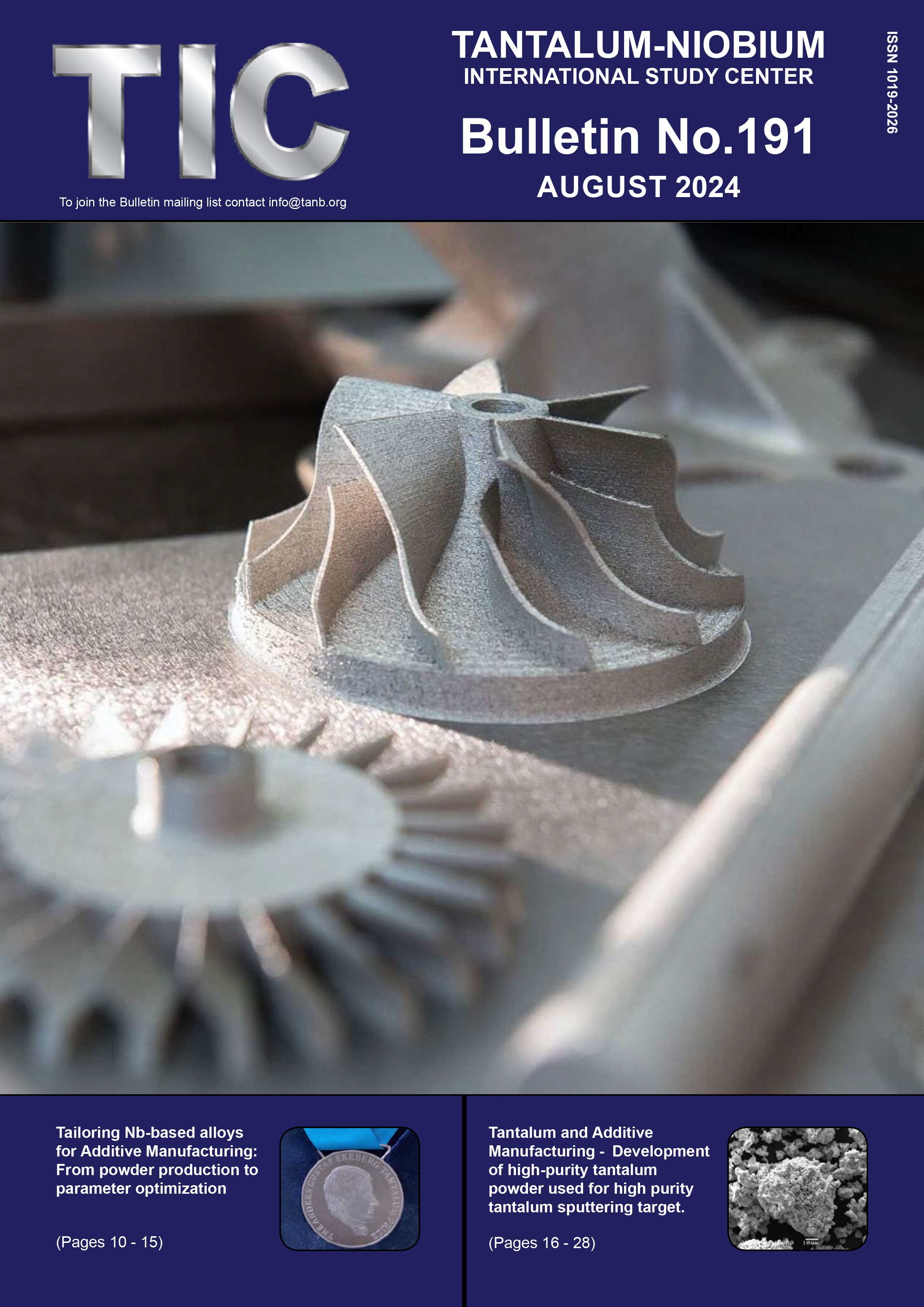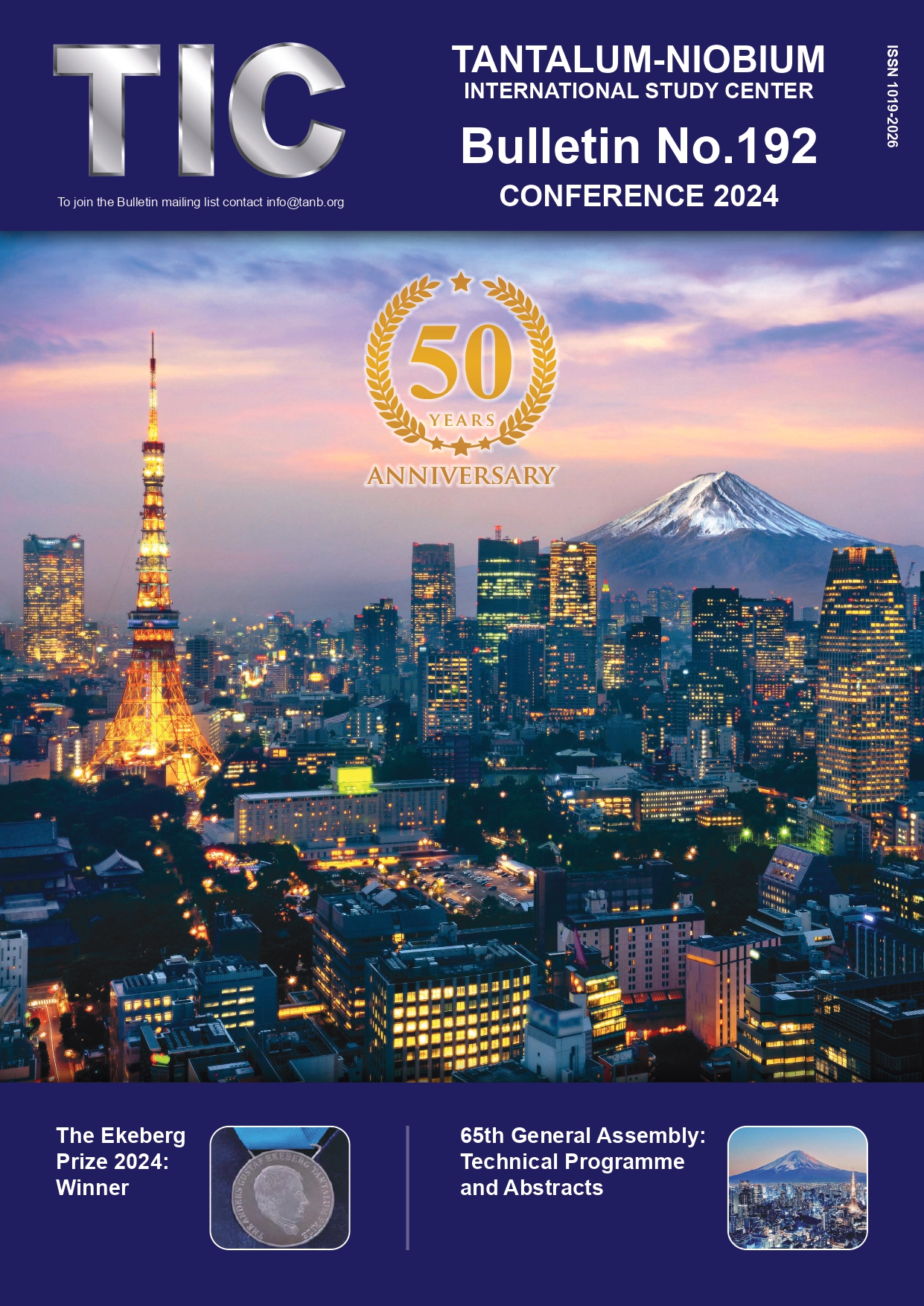About niobium
Early history
Niobium was the first of these two elements to be discovered. In 1801, Charles Hatchett (1765-1847), an English chemist, analysed a specimen of an unknown mineral from the collection of the British Museum in London. This was a heavy black mineral obtained from the collection of the first governor of Connecticut, John Winthrop, who was an alchemist, manufacturing chemist, physician, and rock collector. The mineral, later called columbite, was found near New London, Connecticut. Charles Hatchett determined that this mineral contained a 'new earth', which implied a new element had been found. He named this element columbium apparently in reference to its source being America.
Read MoreTypical market specifications
Columbite on the international market generally contains a minimum of 50% Nb2O5. The value is based on the combined Nb2O5+Ta2O5 content payable entirety as Nb2O5, there is no premium for the Ta2O5 content.
Read MoreValuation basis
The T.I.C. as an international association is not allowed to gather data on nor discuss prices, forecasting or future trends, as this would be against our Charter and may raise antitrust and competition law concerns. It is important to understand that there are no official prices for tantalum or niobium commodities, as these metals are not traded on any metal exchange (London Metal Exchange or other). The price is determined solely by negotiation between buyer and seller.
Read MoreProduction of raw materials
The primary mineral from which niobium is obtained is known as pyrochlore. The world's largest deposit is located in Araxa, Brazil and is owned by Companhia Brasileira de Metalurgia e Mineracao (CBMM). The reserves are enough to supply current world demand for about 500 years, about 460 million tonnes. The mining of weathered ore, running between 2.5 and 3.0% Nb2O5, is conducted by simple open pit mining without the need for drilling and explosives.
Read MoreProcessing: extraction and refining
Two separate processing schemes are utilized for niobium production. Those companies that mine pyrochlore convert the niobium oxide units into HSLA ferroniobium through the aluminothermic reduction process or by reduction in an electric arc furnace. CBMM has installed capacity for the production of a high purity oxide that can be used to produce vacuum grade ferro- and nickel-niobium as well as niobium metal ingots via electron beam refining.
Read MoreApplications for niobium
Niobium consumption is dominated by its use as additive to high strength low alloy steel and stainless steel for oil and gas pipelines, car and truck bodies, architectural requirements, tool steels, ships hulls, railroad tracks. However, there are a number of other applications for niobium metal and its compounds.
Read MoreHarmonised system commodity codes
Developed by the World Customs Organization (WCO), this is a six-digit figure for describing internationally traded goods. Individual countries may further extend this code with an additional two or four digits, however these additional digits are not harmonised and may have different meanings from country to country. Below is a list of six-digit HS codes known to apply, or to have applied at some time, to niobium-containing materials.
Read MoreFurther information
T.I.C.'s library of external links and third-party reports related to niobium.
Read More




